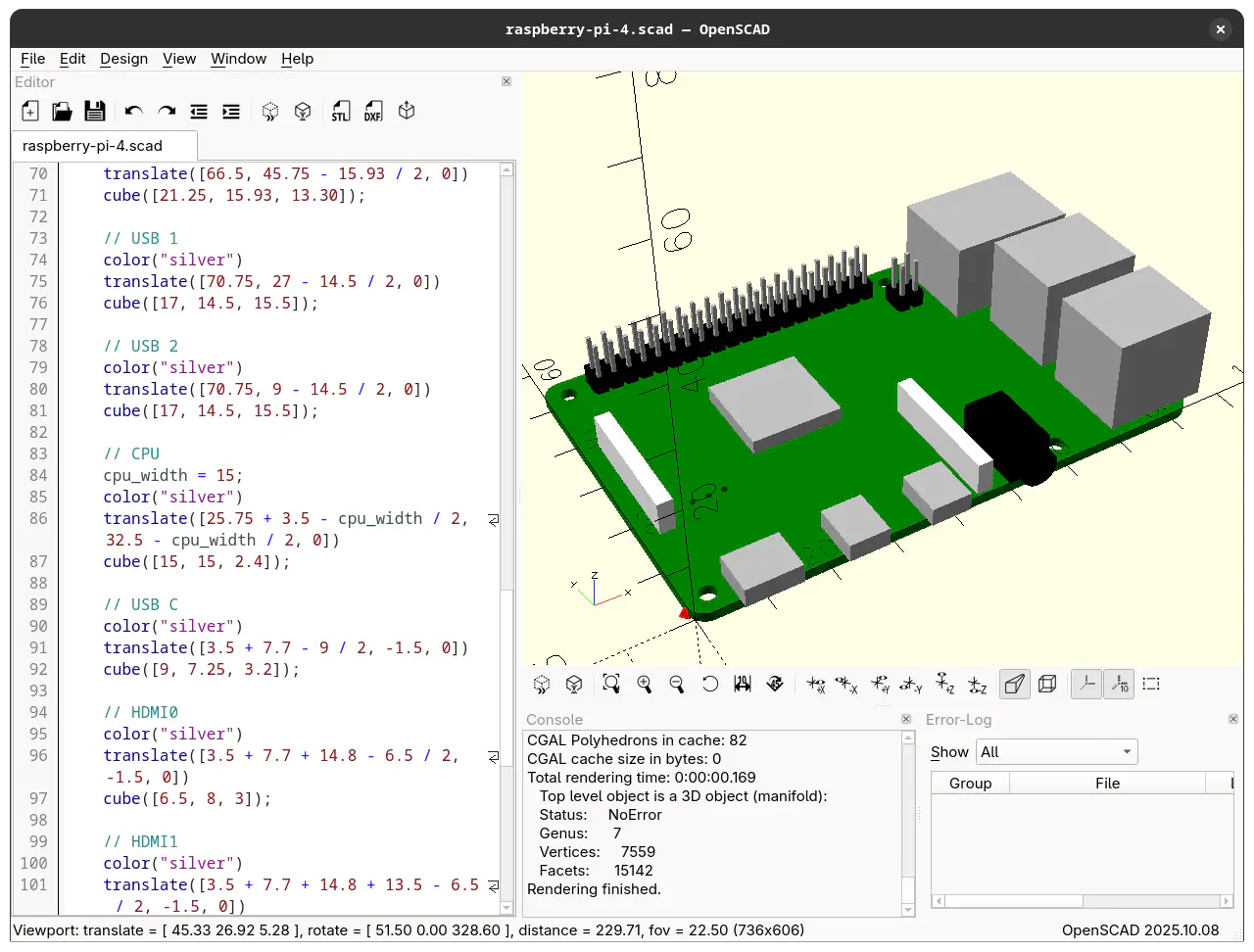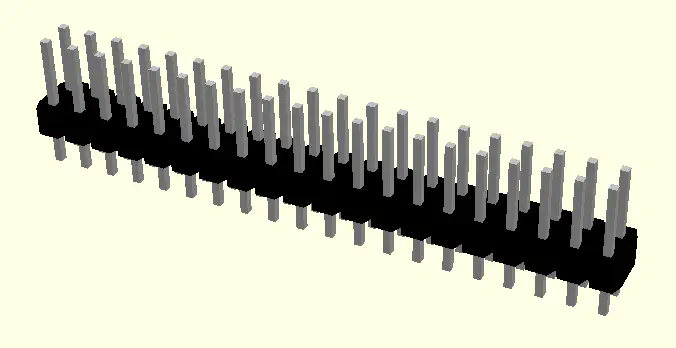It is a truth universally acknowledged that there is a direct relationship between a software’s usage of the GNU multiple precision software library and its objective coolness. OpenSCAD is no exception to this rule… BEHOLD!

OpenSCAD is what you get when you combine a programming language and CAD software. Of course, the SCAD language isn’t actually a programming language. It’s a domain-specific language that allows the user to declaratively describe 3D models in a way that is reproducible and parametrizable. Basic shapes are combined, aggregated, and subtracted from each other in order to create more complex 3D models.
Powerful parameterization
The SCAD language makes it easy to build expressive 3D model abstractions as modules, which use parameters to construct 3D objects. For example, here’s a module I created to help construct the Raspberry Pi in the previous image:
module pin_header(
pins_x = 20,
pins_y = 2,
pin_width = 0.65,
pin_pitch = 2.54,
pin_height = 11.5,
spacer_height = 2.5,
);
Constructing a pin header with these default values yields the following:

The module will use these default values unless the caller overrides them. I use these default values for the 40-pin header on the Raspberry Pi model, but I reuse this module for the 4-pin PoE header as well:
// Create a 2 x 2 pin header
pin_header(pins_x = 2);
Constructing a pin header with the modified pins_x value yields the following:

After expressing most dimensions of the pin header as parameters, it’s now a versatile part that can be reused in many different ways. Personally, I don’t deal with electrical component libraries all that often, but if I were in charge of curating and creating 3D models of electrical components, I would be very interested in OpenSCAD. Many similar electrical components have minor physical variations, which make them annoying to capture and maintain as many different 3D models using conventional CAD software. OpenSCAD, on the other hand, could be made useful for describing many different electrical components with just one SCAD file.
Conclusion
The team behind OpenSCAD has done well to keep the software simple, allowing them to focus on carefully polishing a core set of features. I’ve found that the few features that I actually wanted were implemented well and left very little to be desired.
However, if you decide to check out OpenSCAD, I recommend that you check out the latest nightly build of the software. It hasn’t had an official release since 2021. Since 2021, OpenSCAD has switched its backend to manifold, a new geometric rendering library which was built specifically to ease some of the pain that floating point imprecision and overlapping faces inflict upon users of CAD software. This new backend is also an order of magnitude faster than the old CGAL backend.
Thanks to Marius Kintel and the many others behind OpenSCAD.